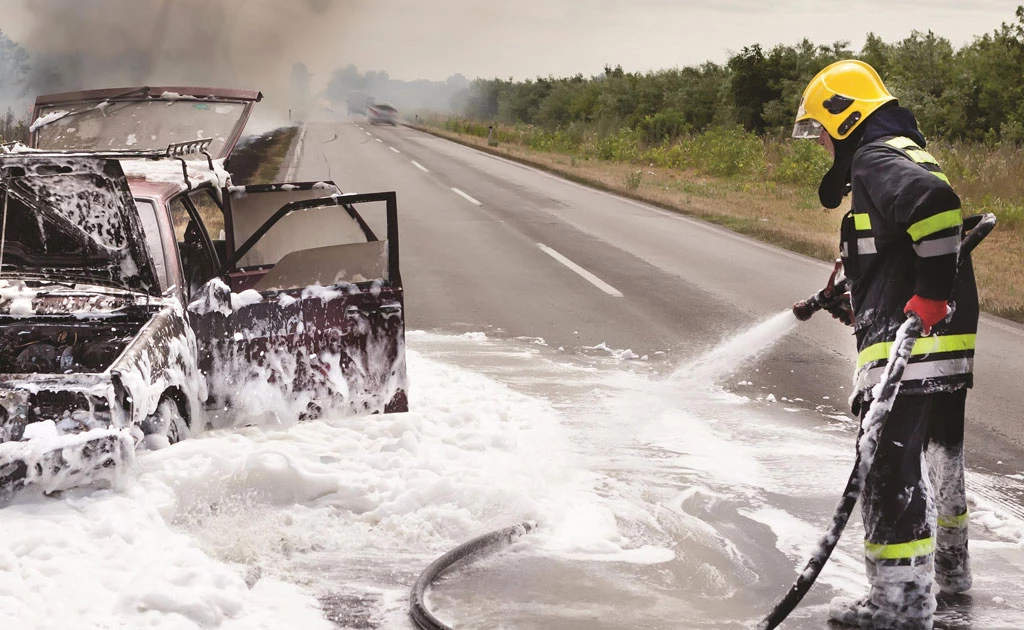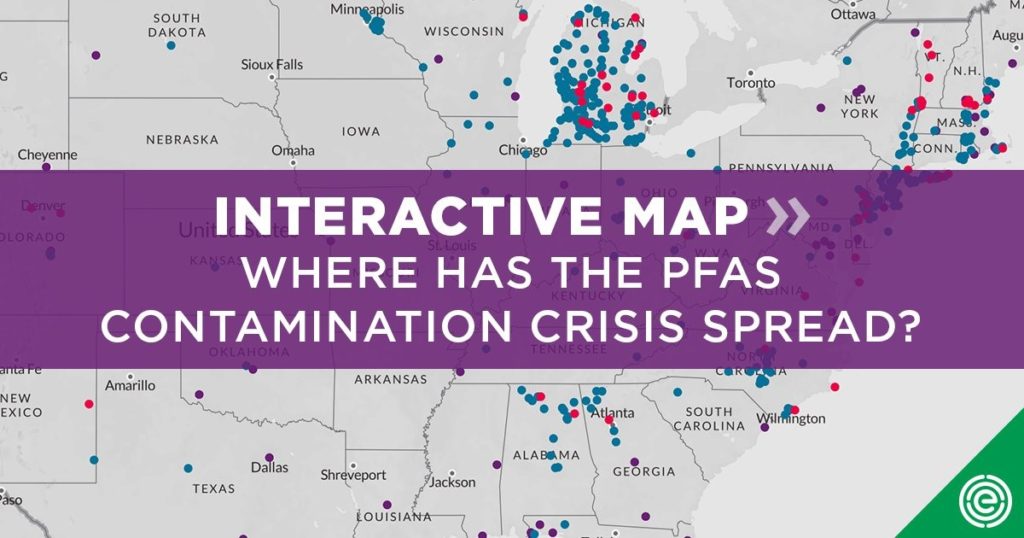Fire Fighting Foam (AFFF) Lawsuit
Douglas & London, P.C. Reaches Historic Multi-Billion Dollar Settlement with 3M Company Over PFAS Contamination.

If you or a loved one developed cancer or illness after exposure to firefighting foam, you may be eligible to receive compensation for medical bills, lost wages, pain and suffering, and more. Douglas & London is highly experienced in toxic exposure cases and has helped recover hundreds of millions of dollars on behalf of clients who were contaminated by PFAS, the toxic chemicals that are contained in Aqueous Film Forming Foam (AFFF). Every state has deadlines for filing an AFFF lawsuit, so reach out as soon as possible for your complimentary legal consultation. We are accepting cases nationwide.
Please continue reading to learn more about what AFFF is, the dangers it presents, and what victims of AFFF toxic exposure can do to seek justice.
What is AFFF?
Aqueous Film Forming Foam (AFFF) is a fire suppressant that is mostly used by firefighters, military personnel, and at airports for commercial use. AFFF has been widely used because it’s an effective solution for extinguishing extremely hazardous flammable liquid fires in oil refineries, offshore platforms, chemical plants, aviation operations, and military facilities. Although in use for decades, this aqueous film forming foam contains chemicals that are known to present serious risks to both human and environmental health.
AFFF Foam Cancer Risks
Aqueous Film Forming Foam contains perfluorooctanoic acid (PFOA) and perfluorooctanesulfonic acid (PFOS), which are per- and polyfluoroalkyl substances, also known as PFAS. These man-made chemicals, used in industry and consumer goods for over 60 years, can contaminate both soil and groundwater and have been linked to an increased risk of cancer. PFAS is referred to as a “forever chemical” because the elemental bonds of fluorine and carbon are extremely strong and difficult to break down in the environment and in our bodies. This means that the carcinogens in AFFF, when consumed by people, stay in the body for a very long period of time.
The International Agency for Research on Cancer (IARC) classified perfluorooctanoic acid – one of the most well-documented types of PFAS chemicals– as a “possible human carcinogen” based on epidemiologic evidence of testicular and kidney cancer in people with heavy exposure to PFAS.
Exposure to firefighting foam containing PFAS chemicals has also been linked to:
- Kidney cancer
- Testicular cancer
- Liver cancer
- Ulcerative colitis
If you are a firefighter, airport employee, military personnel, or work in a chemical plant where firefighting foam is utilized and were later diagnosed with cancer, you’re encouraged to explore your options for legal recourse. Cancer potentially caused by AFFF merits further investigation by skilled legal counsel.
How Is Firefighting Foam Contaminating the Water?
Because PFAS can permeate ground water and soil, they have contaminated drinking water in cities across the United States.
AFFF gets into the environment once the firefighting foam is discharged and released during use and due to spills and leaks which occur in AFFF storage locations. AFFF can contaminate the soil, surface water, and groundwater, and the residual materials can enter drain systems and discharge to remote locations.
Where Is AFFF Found?
The Environmental Working Group (EWG) has a very helpful map that highlights areas with environmental contamination by AFFF. AFFF on this map is mostly highlighted by red or purple dots and is generally found in military facilities, municipal airports, refineries, fuel tank farms, and other industries which could potentially use and store tons of petroleum.

Side Effects of AFFF Exposure
AFFF contains the chemicals perfluorooctanoic acid (PFOA) and perfluorooctanesulfonic acid (PFOS) which are per- and polyfluoroalkyl substances (PFAS). PFAS is referred to as a “forever chemical” because the elemental bonds of fluorine and carbon are extremely strong and difficult to break down in the environment and in our bodies. This means that the carcinogens in AFFF, when consumed by people, stay in the body for a very long period of time.
The U.S. Department of Veteran Affairs has begun warning veterans about the increased risks of AFFF side effects, including kidney cancer, testicular cancer, liver cancer, thyroid cancer, and ulcerative colitis, after being exposed to the fire-fighting foam in military facilities.
Timothy Putnam, the Vice-President of the Tidewater Federal Fire Fighters and a member of the International Association of Firefighters, spoke to the U.S. Senate about this chemical crisis. In this statement, Putnam cites animal testing, human exposure, and research done by the International Agency for Research on Cancer (IARC) to link exposure to this firefighting foam to testicular and kidney cancer.
Airports are also now switching to PFAS-free fire foam due to the current firefighting foam’s links to cancer. This provision was passed as part of the reauthorization of the Federal Aviation Administration, which passed the Senate 93-6.
Risk for AFFF Exposure
While airport workers, firefighters, and military members are the highest risk occupations when it comes to contact with this toxic foam, there are other individuals who may be at risk for AFFF exposure. Keep in mind that AFFF has been used to fight fuel fires on military bases since the 1970s. Its presence was once ubiquitous. Groundwater contamination is one of the biggest threats to residents who live near areas where firefighting foam was used and disposed of. Unfortunately, there is evidence that municipal water supplies throughout the nation have been contaminated with PFAS.
How Douglas & London Can Help
Military, Aviation, and Fire Fighter organizations are warning their members about the dangers of being exposed to AFFF and making huge changes as a result. However, the exposure of AFFF can spread, so whether you were working in the facilities or spent time near one, you may have been exposed to AFFF.
The attorneys of Douglas & London have experience representing clients who have suffered from toxic chemical exposure. Gary Douglas, who is a founding partner of Douglas & London, served as co-lead counsel in litigation representing victims of PFAS exposure and secured a $671 million settlement. This was after our attorneys were able to secure verdicts of $1.6 million, $5.1 million, and $12.5 million.
Our lawyers can determine if you or a loved one qualify for an AFFF lawsuit and provide the representation you need to hold liable parties accountable for their negligence. While a settlement or jury award cannot erase the harms suffered, a monetary recovery can alleviate the various financial hardships incurred.
What Compensation is Available in an AFFF Lawsuit?
Our legal team strives to maximize compensation for AFFF exposure. Claimants may be eligible for money damages to compensate for past and ongoing medical expenses, lost income, loss of future earnings, permanent disability, pain and suffering, and loss of consortium. The specific facts of your case will determine the value of your AFFF cancer lawsuit.
Holding Negligent Manufacturers Accountable
Multi-billion dollar manufacturers like DuPont and 3M have sold AFFF for decades, despite evidence that the product’s chemicals posed grave long-term risks to human health. When companies place profits over consumer safety, and fail to warn the public of known risks, they should be held accountable for their actions. To be held liable for AFFF exposure, it must be proven that the defendants were negligent in the design, testing, manufacturing, or marketing of their products, and that this negligence resulted in actual injuries and financial losses.
Accepting AFFF Claims Nationwide
Douglas & London is accepting AFFF cases nationwide, including in:
- Arizona
- California
- Colorado
- Florida
- Georgia
- Illinois
- Idaho
- Maryland
- Missouri
- New Jersey
- New York
- North Carolina
- Maine
- Oregon
- Pennsylvania
- South Dakota
- Tennessee
- Texas
- Virginia
- Wisconsin
- Wyoming
File a AFFF Contamination Lawsuit with Douglas & London
If you or someone you know were contaminated with AFFF and are now diagnosed with kidney cancer, testicular cancer, liver cancer, thyroid cancer, or ulcerative colitis, please feel free to contact our experts at Douglas & London. You may be entitled to compensation and you don’t pay unless we win. To apply for a free consultation, fill out the form on the side of the screen, chat with us or give us a call at (212) 566-7500.

